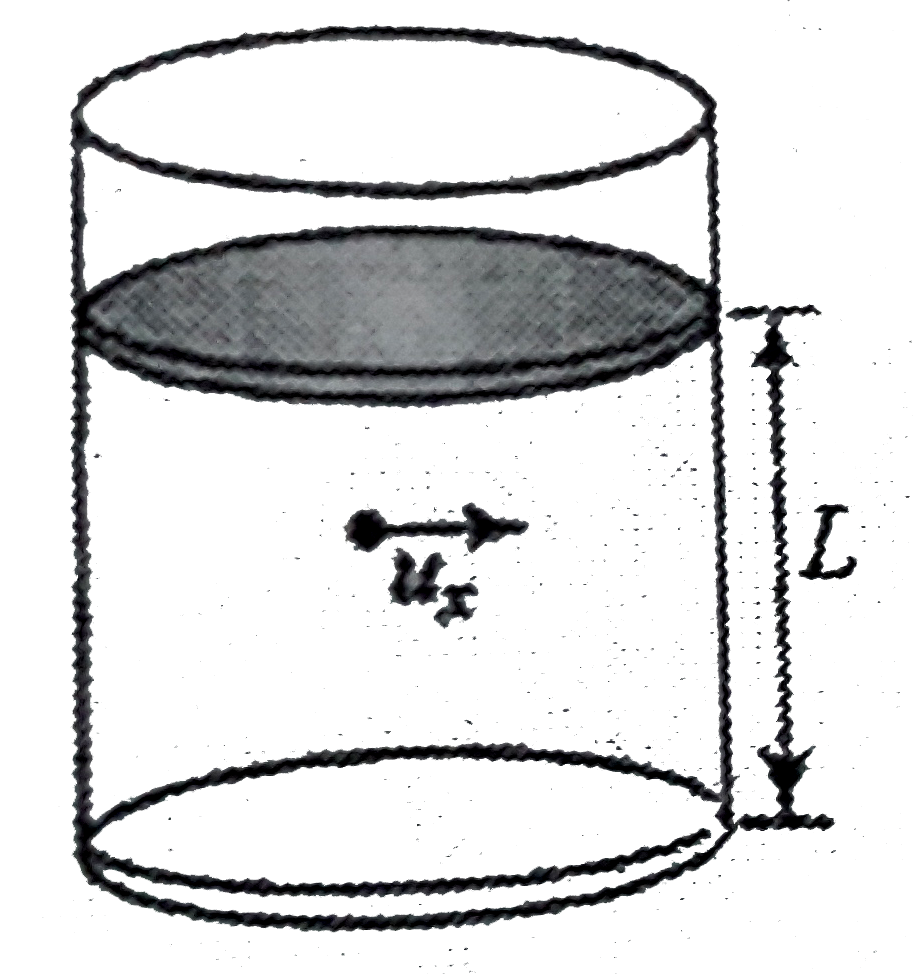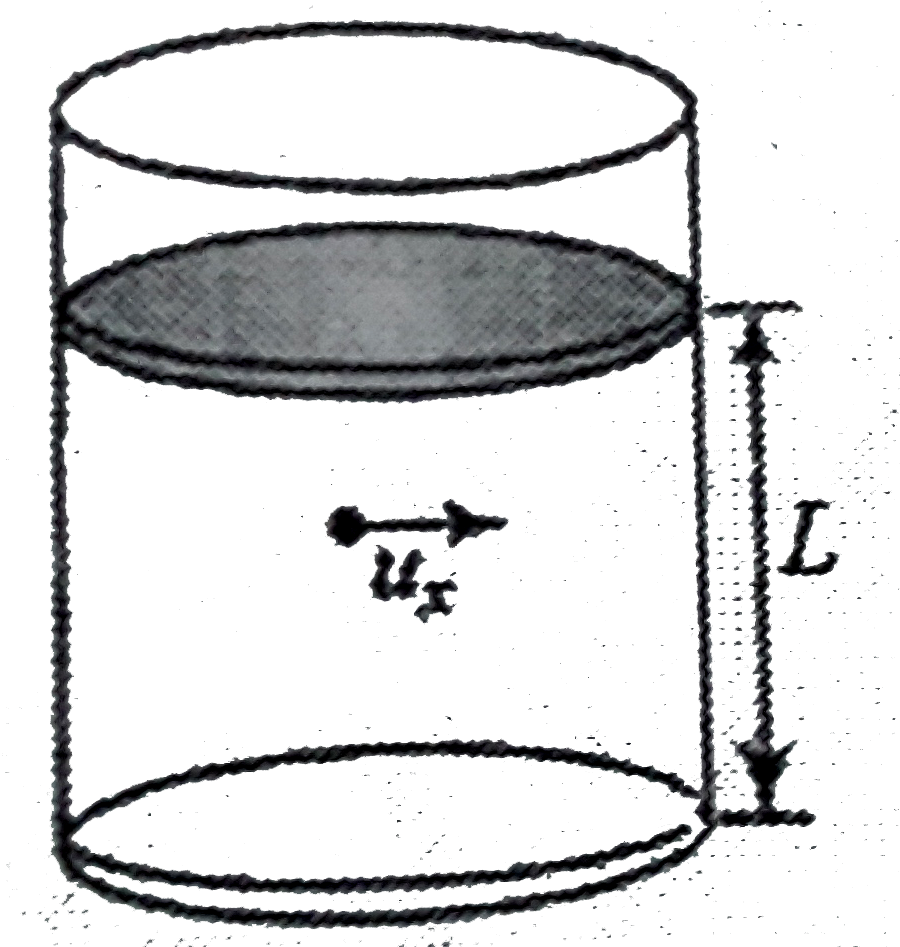Suppose there are N molecules each of mass m, of an ideal gas in a container. The x component of velocity of a molecule is denoted by . The gas is enclosed using a horizontal piston of area A as shown.

If the piston is moved so as to reduce the volume of gas by half, keeping the temperature of gas constant , we know from the gas law that the pressure will be doubled. On microscopic level the increase in pressure on the piston is because
momentum change per collision is doubled while the frequency of collision remains constant
momentum change per collision remain constant while the frequency of collision is doubled
momentum change per collision and the frequency of collision both are increased
none of these two physical quantities are changed. It is due to some other reason.
The correct Answer is:D
Step by step video & image solution for Suppose there are N molecules each of mass m, of an ideal gas in a container. The x component of velocity of a molecule is denoted by u_(x). The gas is enclosed using a horizontal piston of area A as shown. If the piston is moved so as to reduce the volume of gas by half, keeping the temperature of gas constant , we know from the gas law that the pressure will be doubled. On microscopic level the increase in pressure on the piston is because by Physics experts to help you in doubts & scoring excellent marks in Class 11 exams.
Topper's Solved these Questions
- BOOK - CENGAGE PHYSICS ENGLISHCHAPTER - KINETIC THEORY OF GASESEXERCISE - Fill in the blanks8videos
KINETIC THEORY OF GASES
- BOOK - CENGAGE PHYSICS ENGLISHCHAPTER - KINETIC THEORY OF GASESEXERCISE - Multiple correct3videos
KINETIC THEORY OF GASES
- BOOK - CENGAGE PHYSICS ENGLISHCHAPTER - KINETIC THEORY OF GASESEXERCISE - Compression2videos
KINETIC THEORY OF GASES
- BOOK - CENGAGE PHYSICS ENGLISHCHAPTER - KINEMATICS-2EXERCISE - Exercise Integer9videos
KINEMATICS-2
- BOOK - CENGAGE PHYSICS ENGLISHCHAPTER - KINETIC THEORY OF GASES AND FIRST LAW OF THERMODYNAMICSEXERCISE - Interger11videos
KINETIC THEORY OF GASES AND FIRST LAW OF THERMODYNAMICS
Similar Questions
Suppose there are N molecules each of mass m, of an ideal gas in a container. The x component of velocity of a molecule is denoted by ux. The gas is enclosed using a horizontal piston of area A as shown.

The pressure of the gas isView SolutionSuppose there are N molecules each of mass m, of an ideal gas in a container. The x component of velocity of a molecule is denoted by ux. The gas is enclosed using a horizontal piston of area A as shown.

If the temperature of gas is doubled keeping volume constant, we know from the gas law that the pressure will be doubled. On microscopic level this increase in pressure is becauseView SolutionSuppose there are N molecules each of mass m, of an ideal gas in a container. The x component of velocity of a molecule is denoted by ux. The gas is enclosed using a horizontal piston of area A as shown.

The pressure of the gas can also be written in terms of momentum transferred per collision (Δp) and collision frequency (f) on the wall of area A asView SolutionThe absolute temperature of an ideal gas is….. to/than the average kinetic energy of the gas molecules.
View SolutionThe average speed of gas molecules is v at pressure P, If by keeping temperature constant the pressure of gas is doubled, then average speed will become
View SolutionThe temperature of a gas is raised while its volume remains constant, the pressure exerted by the gas on the walls of the container increases because its molecules
View SolutionThe temperature of a gas is raised while its volume remains constant, the pressure exerted by the gas on the walls of the container increases because its molecules
View SolutionThe temperature of a gas is raised while its volume remains constant, the pressure exerted by the gas on the walls of the container increases because its molecules
View SolutionThe r.m.s speed of the molecules of an ideal gas Is V0 If pressure of the gas is halved but temperature is kept constant then r.m.s. speed of the gas molecule will be
View SolutionA movable piston separates a sample of gas from vacuum. In this state, pressure of gas is P, then find pressure after piston is released
 View Solution
View Solution

